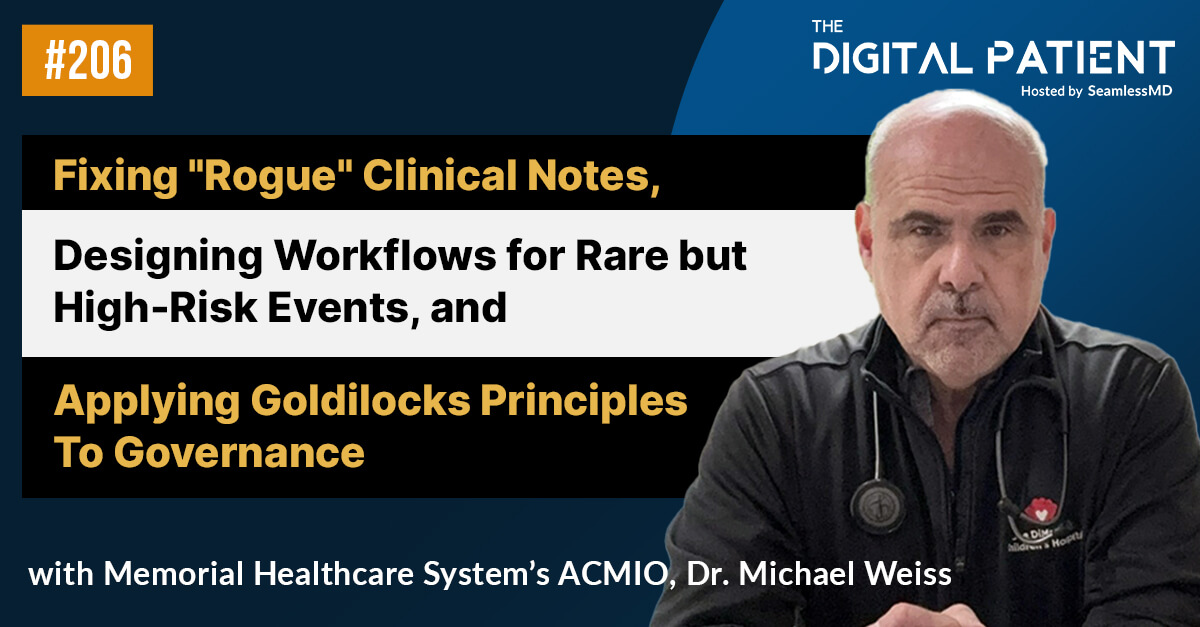Subscribe on: RSS | SPOTIFY | APPLE PODCAST | GOOGLE | BREAKER | ANCHOR
Podcast Audio:
Video:
In this episode of the SeamlessMD Podcast, Dr. Joshua Liu, Co-founder & CEO at SeamlessMD, and marketing colleague, Alan Sardana, chat with Caroline Fanti, Director of the Regional Surgical Services at Thunder Bay Regional Health Sciences Centre, about Surgical Remote Monitoring to reduce ED visits and readmissions. See the full show notes below for details.
Episode guests:
• Caroline Fanti, Director of the Regional Surgical Services at Thunder Bay Regional Health Sciences Centre
• Dr. Joshua Liu (@joshuapliu), Co-founder & CEO at SeamlessMD
Show notes:
[0:00] Introducing Caroline Fanti, Director of the Regional Surgical Services at Thunder Bay Regional Health Sciences Centre;
[1:17] Why Ms. Fanti and the Thunder Bay Regional Health Sciences Centre (TBRHSC) valued virtual care since 2017, for its ability to:
- Democratize access to health care, as the majority of the patient community is spread out and remote;
- Recruit and retain health care providers in the Northwest;
- Reduce inconvenient patient travel especially in winter when road and air travel conditions are greatly impacted by weather;
[4:19] How Ontario Health’s support with implementing surgical remote care monitoring platforms for bundle care has helped TBRHSC embrace bundled care programs as they are becoming increasingly adopted across Canada and the United States;
[6:29] How surgical remote monitoring provides:
- A safety net for patients that supports the patient through their entire surgical journey from pre-op to post-op;
- Patients a way to connect with their care team while at home;
- Patient self-management;
- More options for patients for safer care during the COVID-19 pandemic;
- Confidence for providers to allow an earlier discharge, knowing that patients get the right care at the right time;
- The care team the ability to intervene quicker while offering critical recommendations to patients who are reporting atypical symptoms;
[14:17] How the TBRHSC team, with immense support from the surgeons, were highly engaged and willing to embrace the shift to remote monitoring solutions quickly, seeing immense benefits especially during the COVID-19 pandemic;
[23:33] How patient feedback on SeamlessMD has been overwhelmingly positive thus far, including a patient for whom the App flagged post-discharge, helping to save their life;
[25:15] How Ms. Fanti and the TBRHSC team worked with SeamlessMD to determine an optimal patient flagging system so that the alerts were balanced, sending the right patients to the ED and ultimately decreasing ED visits;
[28:16] How remote patient monitoring solutions allow TBRHSC to expand access to care beyond provincial borders, such as Manitoba;
[31:32] Why TBRHSC follows up with patients if they’ve had one emergency visit to find out how they could be better supported remotely to continue reducing unnecessary ED visits;
[33:58] How interprofessional collaboration strengthens best practice and prevents the need to reinvent the wheel locally as well as provincially;
[36:51] How the combination of technology and vigilance from the TBRHSC team has helped patients while simultaneously setting a new standard of care during a difficult time in health care;
[41:25] Fast Five / Lightning Round Questions:
- Q1: What is your favorite book or book you’ve gifted the most?
- A1: “The Help,” by Kathryn Stockett
- Q2: How has an apparent failure set you up for greater success?
- A2: “I think it’s through applying for different positions that I was not the successful candidate for, that actually supported leadership in the creation of this role for me as Director of Regional Surgical Services for Ontario Health Northwest.”
- Q3: Would you rather have super strength, super speed, or the ability to read people’s minds?
- A3: “Super strength.”
- Q4: What is something in healthcare you believe that others might find insane?
- A4: “The transformation we’ve done in getting patients to have the mind shift around self-management and the importance of getting home quickly.”
- Q5: What is 1 hobby or activity you’ve gotten into since the pandemic?
- A5: “Holistic health, more yoga and finally getting around to doing some meditation.”
________________________
← Go to previous episode
Episode 42: How to Implement Surgical Remote Monitoring
Go to next episode →
Episode 42: How to Implement Surgical Remote Monitoring
.svg)










.png)
